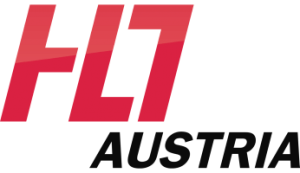CDA2FHIR 2024
Short Description | The main purpose of this track is to test the conversion of the Austrian HL7 CDA Laboratory Report (Version 2.06.3 and Version 3.0) to FHIR by leveraging the CDA Logical Model and the current status of the CDA2FHIR maps. Furthermore, this track may be used to get an insight of the FHIR Mapping Language. |
Long Description | Mapping Specification The architecture of the Austrian EHR system (ELGA) is mainly based on HL7 CDA leveraging the IHE XDS framework. Recent national and international projects (e.g. myHealth@EU) are evaluating the use of HL7 FHIR as parallel or even as replacing architecture. As the existing CDA documents would have to be accessible in an HL7 FHIR environment as well a mapping to HL7 FHIR is required. For this purpose, the international CDA Logical Model has been enhanced by the elements required by the Austrian CDA XML Schema. Furthermore, HL7 FHIR maps have been created in order to be used for mapping from HL7 CDA to HL7 FHIR. Currently, the HL7 FHIR maps target the HL7 Europe Laboratory Report and as of now, the maps are able to create a FHIR Bundle which contains the header information (participants) as well as the clinical data (observations). The generated Observation resources already conform to the HL7 Europe Laboratory Report. The rest of the Bundle is still work in progress and shall soon be aligned with the IG specification. Mapping Execution Along with the specification of the mapping this track is also focusing on the execution of the mapping. For this reason the following tools may be tested and the results compared:
Expectations Throughout the course of this track we expect and hope to achieve:
|
Type | Test the design of a Resource/set of Resources |
Submitting Work Group/ | |
Track Lead(s) | |
Track Lead Email(s) | tc-fhir@hl7.at |
Related Tracks | |
FHIR Version | FHIR R4 |
Specification(s) this track uses | https://github.com/HL7Austria/CDA-core-2.0/tree/cda-ext-elga (Austrian CDA Logical Model) https://github.com/HL7Austria/CDA2FHIR/tree/hl7eu (Austrian CDA2FHIR maps which have the HL7 Europe Laboratory Report as target) https://hl7.org/fhir/R4/structuremap.html (StructureMap) https://build.fhir.org/mapping-language.html (Mapping Language) |
Artifacts of focus | - |
Expected participants | |
Date / Time | Monday March 11, 09:00am-03:30pm CET |
Test Servers | See Test Servers |
Track Details | Prerequisites (recommended)
System rolesFHIR Transformation Server (Matchbox)For service providers, implement the following operations:
Support additional capabilities:
CDA2FHIR TransformerImplement any one or more of:
Discussion
Scenarios1 - Transformation of HL7 CDA Laboratory ReportUsing the examples of HL7 CDA Laboratory Reports in GitLab test the transformation to HL7 FHIR.
2 - Execution of simple mapping exampleUse the following example together with https://hl7.org/fhir/R4/practitioner-example.xml.html in order to create a Patient resource. Sample Mapping map "http://hl7.at/fhir/HL7ATCoreProfiles/4.0.1/StructureMap/simple-sample" = "PractitionerToPatient"
uses "http://hl7.org/fhir/StructureDefinition/Practitioner" alias Practitioner as source
uses "http://hl7.org/fhir/StructureDefinition/Patient" alias Patient as target
group PractitionerToPatient(source practitioner: Practitioner, target patient: Patient) {
practitioner.identifier as identifier -> patient.identifier = identifier;
practitioner.name as name -> patient.name = name;
practitioner.telecom as telecom -> patient.telecom = telecom;
practitioner.birthDate as birthDate -> patient.birthDate = birthDate;
}
REST-Requests REST-Request ### 1. POST SimpleSample.map
POST {{host}}/StructureMap HTTP/1.1
Accept: application/fhir+xml;fhirVersion=4.0.1
Content-Type: text/fhir-mapping
< ./maps/SimpleSample.map
### 2 POST practitioner.xml
POST {{host}}/StructureMap/$transform?source=http://hl7.at/fhir/HL7ATCoreProfiles/4.0.1/StructureMap/simple-sample
Accept: application/fhir+xml;fhirVersion=4.0.1
Content-Type: application/fhir+xml;fhirVersion=4.0.1
< ./input/practitioner.xml
3 - Validate the created resourcesUse the FHIR Validator for validating the created resources.
4 - Load created resources to FHIR servers
|
